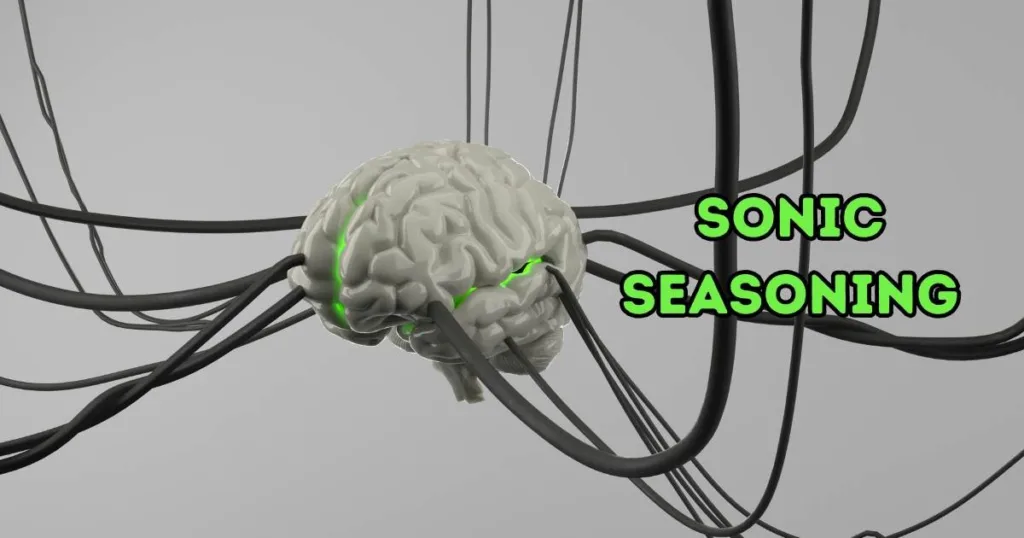Imagine savoring a piece of chocolate while listening to high-pitched chimes versus deep bass notes the same chocolate might taste sweeter or more bitter depending on the soundtrack. This fascinating phenomenon, known as sonic seasoning, reveals how sound frequencies and music profoundly influence our perception of taste and flavor. Restaurants and food scientists worldwide are discovering that what we hear while eating can enhance sweetness, reduce bitterness, or even make dishes seem more aromatic. From the crunch of fresh vegetables to carefully curated background music in upscale dining rooms, auditory elements shape our culinary experiences in ways we’re only beginning to understand. This article explores the science behind this sensory interplay, practical applications in modern gastronomy, and how you can harness ambient sounds to elevate your own meals at home.
What Is Sonic Seasoning and How Does It Work?
Sonic seasoning refers to the deliberate use of sound design and auditory stimuli to enhance or alter our perception of food and drink. This emerging field combines neuroscience, sensory science, and gastronomy to create multisensory dining experiences. When we eat, our brain doesn’t process taste in isolation; it integrates information from all our senses, including hearing, to construct the overall flavor experience.
Research shows that high-frequency sounds (2000-4000 Hz) can enhance sweetness perception, while low-frequency tones (50-200 Hz) tend to emphasize bitter or umami notes. This occurs because our brain creates crossmodal associations between different sensory inputs, linking certain sounds with specific taste qualities through evolutionary and learned connections.

The Science Behind Sound and Taste Perception
Neural Pathways and Sensory Integration
Our gustatory system doesn’t work alone. The brain’s orbitofrontal cortex integrates signals from taste buds, smell receptors, and auditory processing centers simultaneously. This multisensory integration means that what we hear directly influences how we perceive flavors. Scientists have discovered that:
- Crunchy sounds make food seem fresher and more appealing
- Smooth jazz can make wine taste more mellow and refined
- Classical music enhances the perception of quality in fine dining
- Ocean sounds can intensify the taste of seafood dishes
The Role of Expectation and Atmosphere
Ambient noise levels significantly impact taste perception. Studies reveal that loud environments (above 85 decibels) can suppress our ability to detect saltiness and sweetness, explaining why airplane food often tastes bland. The acoustic environment creates psychological expectations that prime our taste buds before food even touches our tongue.
Historical Development and Pioneer Research
The concept of sonic seasoning gained scientific credibility through Professor Charles Spence’s groundbreaking work at Oxford University. His 2012 study on crisp sounds and freshness perception revolutionized how food scientists approach product development. The research demonstrated that amplifying crunch sounds made potato chips seem 15% fresher to consumers.
Early applications emerged in high-end restaurants like The Fat Duck, where chef Heston Blumenthal paired his “Sound of the Sea” dish with iPod recordings of ocean waves. This culinary innovation marked the beginning of mainstream interest in audio-gustatory experiences.
Practical Applications in Modern Dining
Restaurant Implementation
Forward-thinking establishments now employ sonic seasoning through:
- Custom playlists matched to menu items
- Soundscapes designed for specific courses
- Adjustable acoustic treatments in dining rooms
- Musical pairings similar to wine pairings
Food Product Development
Major food companies utilize sound engineering to enhance products:
- Cereal manufacturers optimize crunch frequencies
- Beverage companies design satisfying opening sounds
- Snack brands engineer the perfect crisp
- Packaging acoustics influence freshness perception
Benefits for Restaurants and Home Dining
Commercial Advantages
Restaurants implementing sonic seasoning report numerous benefits:
- Increased customer satisfaction scores by 20-30%
- Enhanced brand differentiation in competitive markets
- Higher perceived value allowing premium pricing
- Improved dining atmosphere leading to longer stays
- Better online reviews mentioning unique experiences
Home Application Strategies
Creating Your Own Sonic Dining Experience
Transform ordinary meals using these practical techniques:
- Play nature sounds during organic or vegetarian meals
- Use upbeat music to make healthy foods more appealing
- Match tempo to eating pace for better digestion
- Experiment with cultural music for ethnic cuisines
Simple Pairing Guidelines
Music genres and their flavor associations:
- Jazz and blues enhance coffee and chocolate experiences
- Classical music elevates wine and cheese tastings
- Latin rhythms complement spicy dishes
- Electronic music pairs well with molecular gastronomy
Challenges and Considerations
Despite its potential, sonic seasoning faces several obstacles. Individual hearing differences, cultural backgrounds, and personal musical preferences create variability in responses. Not everyone experiences synesthesia or crossmodal correspondences equally, making standardization difficult.
Noise pollution in urban restaurants can interfere with carefully designed soundscapes. Additionally, the cost of professional audio equipment and acoustic consulting may be prohibitive for smaller establishments. There’s also the challenge of balancing conversation needs with optimal sonic environments.
Future Directions and Innovations
The field continues evolving with technological advances. Virtual reality dining, personalized sound profiles, and AI-generated soundscapes represent the next frontier. Researchers are exploring how binaural beats and frequency therapy might enhance nutritional absorption and satisfaction.
As our understanding of sensory perception deepens, sonic seasoning will likely become standard practice in food service, potentially revolutionizing how we approach meal planning and dietary adherence.
Conclusion
Sonic seasoning represents a revolutionary approach to enhancing our dining experiences through the strategic use of sound. From restaurants crafting immersive soundscapes to food manufacturers optimizing product acoustics, this multisensory science is reshaping how we perceive and enjoy food. As research continues unveiling the profound connections between hearing and taste, the applications of sonic seasoning will only expand. Whether you’re a food professional or curious home cook, experimenting with musical pairings and ambient sounds can transform ordinary meals into memorable experiences. Start exploring how the right soundtrack might elevate your next dining occasion
